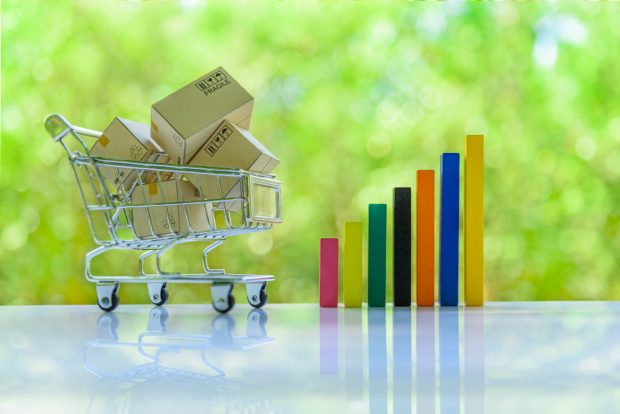 Source: Shutterstock.
Source: Shutterstock.
Credit unions should expect members to shop more heavily this month when the traditional back-to-school spending season "returns with a vengeance" after taking a break last year as the COVID-19 pandemic peaked, CO-OP Financial Services reported Monday.
The payments CUSO, based in Rancho Cucamonga, Calif., said consumers continue to shift habits as the economy reopens, spending more on experiences and less on goods. Dining, entertainment, lodging, camping, home improvement and gas continued to grow from May to June. At the same time, declines were seen among digital goods, computers and office equipment, furniture and supplies, which had been hot as the pandemic spread in the first half of 2020.
Recommended For You
John Patton, CO-OP's senior payments advisor, said debit use is still surprisingly high, showing that members' checking accounts are still flush with cash from stimulus checks received earlier this year.
But he said credit use is increasing in certain sectors, particularly for larger travel and tourism expenses like advance airfare and high-end hotel reservations. With strong job growth numbers and a tight labor market, he said he expects consumer confidence will increase and that CO-OP Financial Services expects growth in credit usage to continue.
"Companies are paying out substantial hiring bonuses to incent employees to come back to work, and salaries for existing workers are getting bumped up," Patton said. "As people have more free cash flow, they will spend more. We're looking forward to a normalization of credit use to where we were in 2019, prior to the pandemic."
The report from the CO-OP SmartGrowth Consulting Team noted three key trends:
- Back-to-School shopping, which took a break last July and August, will "return with a vengeance this year as primary, secondary and collegiate students return to the classroom and students and parents are looking to buy new clothes, school supplies, computers and electronics." Mastercard predicted retail sales during the traditional back-to-school shopping season of mid-July to early September to increase by 5.5% over the same period in 2020 and 6.7% over 2019, with big lifts in apparel and department store sales.
- Digital goods spending on credit has dropped roughly 20% between December and June. The decline in Amazon credit spending has been even more precipitous – around 41% over the same period.
- Payoff rates on credit rates are slowing. Since a 19% contraction in November 2020, declines in year-over year outstanding balances have lessened steadily, reaching 9% in June 2021. The last round of stimulus payments hit consumers' accounts months ago and the Unemployment Assistance (PUA) program is scheduled to end on July 31.
"Consumers paid down their outstanding balances with stimulus funds," Patton said. "Now, the question is whether people are managing their budgets better and – coupled with higher earnings – will keep outstanding balances compressed. We anticipate it will take several years to return to pre-pandemic outstanding balance levels."
Strong spending gains have also been reported by banks in the second quarter.
Spending through Bank of America, Chase and Wells Fargo credit cards was $327.6 billion in the three months ending June 30, up 49% from a year earlier. Capital One of McLean, Va., reported July 22 that credit card spending was $132.7 billion in the second quarter, up 47% from a year earlier and up 24% from 2019′s second quarter.
Among all four, spending was 22% higher than in this year's first quarter.
"As we emerge from the pandemic, consumers are spending more and continuing to make elevated payments," Capital One CEO Rich Fairbank said. "Accelerating purchase volume growth partially offset the impact of historically high payment rates, resulting in strong revenue growth and a more modest year-over-year decline in loan balances."
© Touchpoint Markets, All Rights Reserved. Request academic re-use from www.copyright.com. All other uses, submit a request to [email protected]. For more inforrmation visit Asset & Logo Licensing.







